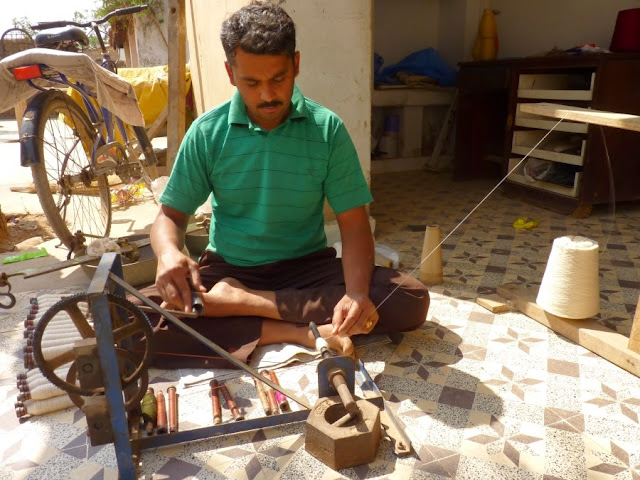When I read about the damage that hordes of tourists have
done to the Kaas Plateau, I thank my stars that I went there 5 years ago, in September 2010, when
there weren’t many visitors there, (at least when I visited) and when there were
no entry fees or fencing around the flowers. For the uninitiated, Kaas plateau
is in Satara district of Maharashtra, India and has been declared a UNESCO
World Heritage Site. Every year towards the end of the Monsoon season, in
September and October, for around 6 weeks, the plateau transforms itself into a
carpet of flowers of various hues. No wonder it is called Maharashtra’s own ‘Valley
of Flowers’.
I had travelled with a team which is into environment conservation,
called Sprouts Environment Trust. So
that is what made the trip entirely pleasurable. To know why the plateau blooms
only during this period, to know that some flowers bloom once in 8 years, to
understand the flora and fauna of the region and marvel at Nature’s infinite
intelligence and beauty. If people go as regular tourists without knowing the
background of the place, like most do, they may end plucking the flowers there,
sitting and lying on the flowers, in the process, trampling them, to get the
best photo-op, and so on and so forth.
This has happened, and that’s why the government has
restricted the number of visitors to 2000 per day and imposed an entry fees of
Rs 10 and put up a fencing all along the main areas.
The flora of the kaas plateau is very unique to the area. And
here’s why. The plateau is largely formed of porous basalt
rock which is covered by a thin cover of soil (about an inch) formed due to
erosion. Most of the water gets drained off due to the porosity of the rock.
That is why there is no vegetation all-round the year. At certain places where water
gets accumulated because of the uneven surface is where the flowering plants
grow. At the end of the 6 weeks, when the flowers and
the plants wither, they decompose and form manure for the next year’s plants
and flowers to grow and bloom. That is why extensive plucking of flowers by
tourists has damaged the eco-system. Each flower is important even after it
withers, for it holds the life for the next season’s bloom.
 |
| Surreal sunset |
It is said that there are
around 850 species of flowering plants in Kaas, including many medicinal varieties,
with many in the endangered category. The rich biodiversity of the place includes butterflies
and moths, migratory birds, reptiles and mammals. The laterite rock layer
allows a rich variety of fungi, lichen, ferns and mosses to thrive.
 |
| Image taken from TOI |
We were lucky to see the
Karvy flowers (Carvia callosa) in bloom that year, as it blooms
only once in 8 years. We saw different patches of the plateau bathed in
different hues. Some areas were an endless purple, some glowed with yellow, and
some other patches were pink and white. Around late afternoons and evenings,
the entire landscape acquires a surreal look with the mellow golden sunlight
lighting up the existing riot of colors.
 |
| The windmill project at Chalkewadi |
Some tips if you are
visiting Kaas:
1.
It is advisable to go with a group/team of
environmentalists/ botanists/ conservationists/ or people who can help identify
the flora and fauna of the region. Trust me, it enhances and enriches your trip
manifold.
2.
Do not pluck flowers and be careful not to
trample flowers in the process of getting a good photo-op.
3.
Please do not litter and carry a bag in which
you can throw trash and bring it back with you.
4.
Use a camera with a good macro function to
capture the splendid flowers in close-up.
5.
Carry a light jacket or shawl as it gets a bit
chill in the evenings.
6.
Wear good walking shoes as you will have a walk
around a lot.
7.
If you are travelling solo, carry a book on the
flowers of Kaas which will help you identify the plants and flowers.
8.
The flowering season starts from September to
mid-October so plan your trip accordingly.
9.
Go on a weekday if possible to avoid the crowds.
10. Last
but not the least, feast your eyes and soul on Nature’s beauty.
If you plan to go:
-
If you plan on staying overnight you will have
to stay in Satara as there is no accommodation up on the Kaas plateau
-
Other nearby places to visit are the Thosegar
waterfalls and the Chalkewadi windmill project around 24 kms from Satara.

























































